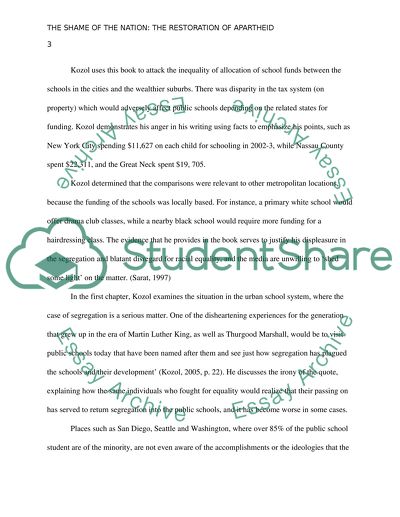Cite this document
(“The Shame of the Nation: The Restoration of Apartheid Book Report/Review”, n.d.)
Retrieved from https://studentshare.org/sociology/1443322-the-shame-of-the-nation-the-restoration-of
Retrieved from https://studentshare.org/sociology/1443322-the-shame-of-the-nation-the-restoration-of
(The Shame of the Nation: The Restoration of Apartheid Book Report/Review)
https://studentshare.org/sociology/1443322-the-shame-of-the-nation-the-restoration-of.
https://studentshare.org/sociology/1443322-the-shame-of-the-nation-the-restoration-of.
“The Shame of the Nation: The Restoration of Apartheid Book Report/Review”, n.d. https://studentshare.org/sociology/1443322-the-shame-of-the-nation-the-restoration-of.


